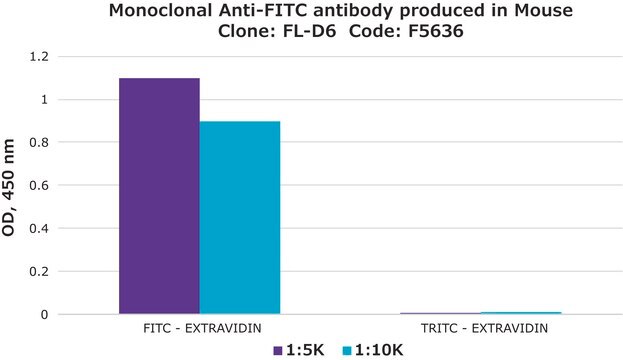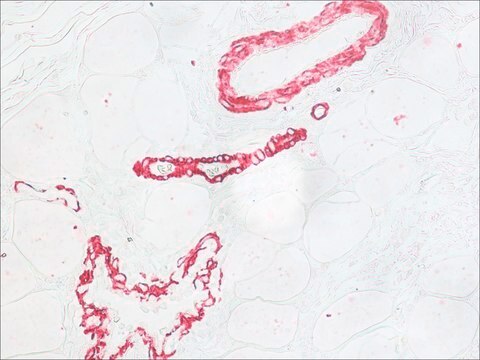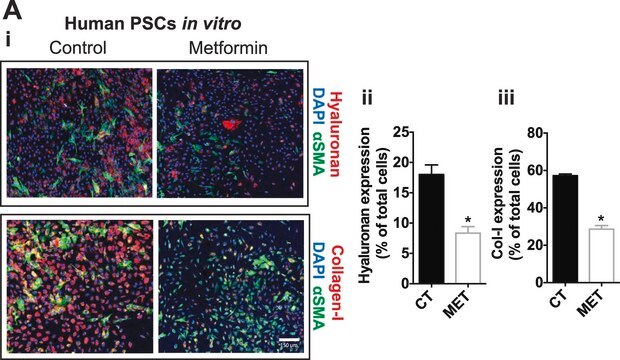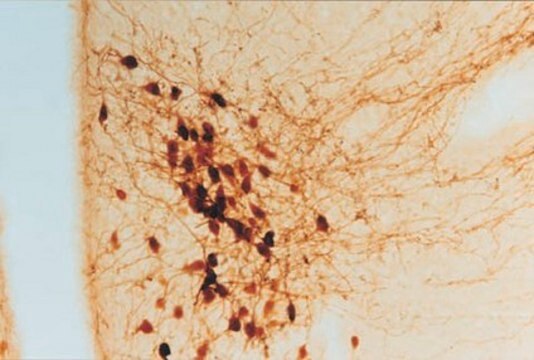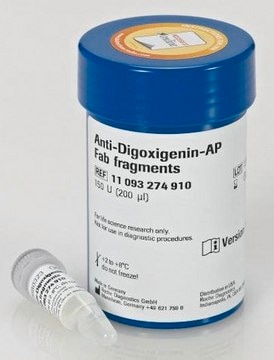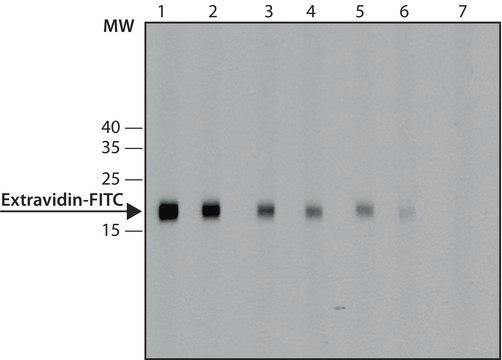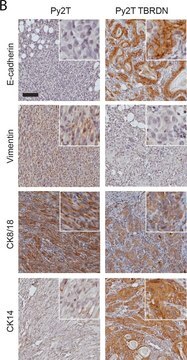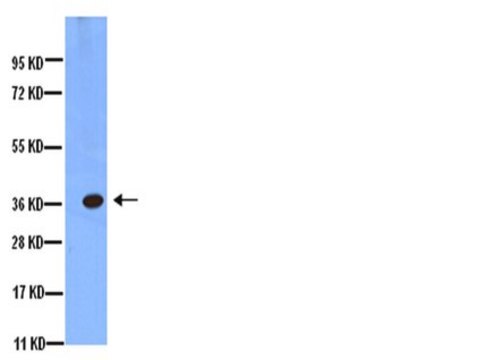B0287
Monoclonal Anti-FITC−Biotin antibody produced in mouse
clone FL-D6, purified immunoglobulin, buffered aqueous solution
Synonym(e):
Monoclonal Anti-FITC
About This Item
Empfohlene Produkte
Biologische Quelle
mouse
Qualitätsniveau
Konjugat
biotin conjugate
Antikörperform
purified immunoglobulin
Antikörper-Produkttyp
primary antibodies
Klon
FL-D6, monoclonal
Form
buffered aqueous solution
Methode(n)
immunohistochemistry (formalin-fixed, paraffin-embedded sections): 1:400 using human tonsil
Isotyp
IgG1
Versandbedingung
dry ice
Lagertemp.
−20°C
Posttranslationale Modifikation Target
unmodified
Suchen Sie nach ähnlichen Produkten? Aufrufen Leitfaden zum Produktvergleich
Allgemeine Beschreibung
Spezifität
Immunogen
Anwendung
- for amplification of signal in immunofluorescence assays
- in Ag-activated beads for flow-based micro immunoassay of parathyroid hormone and IL-5
- enzyme linked immunosorbent assay (ELISA)
Biochem./physiol. Wirkung
Physikalische Form
Haftungsausschluss
Sie haben noch nicht das passende Produkt gefunden?
Probieren Sie unser Produkt-Auswahlhilfe aus.
Lagerklassenschlüssel
10 - Combustible liquids
WGK
WGK 3
Flammpunkt (°F)
Not applicable
Flammpunkt (°C)
Not applicable
Analysenzertifikate (COA)
Suchen Sie nach Analysenzertifikate (COA), indem Sie die Lot-/Chargennummer des Produkts eingeben. Lot- und Chargennummern sind auf dem Produktetikett hinter den Wörtern ‘Lot’ oder ‘Batch’ (Lot oder Charge) zu finden.
Besitzen Sie dieses Produkt bereits?
In der Dokumentenbibliothek finden Sie die Dokumentation zu den Produkten, die Sie kürzlich erworben haben.
Unser Team von Wissenschaftlern verfügt über Erfahrung in allen Forschungsbereichen einschließlich Life Science, Materialwissenschaften, chemischer Synthese, Chromatographie, Analytik und vielen mehr..
Setzen Sie sich mit dem technischen Dienst in Verbindung.